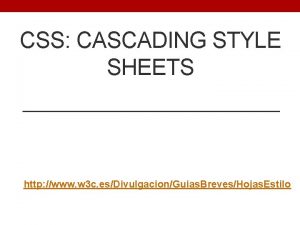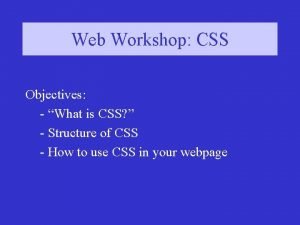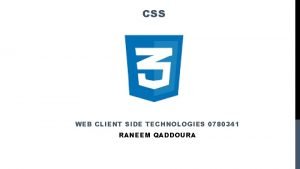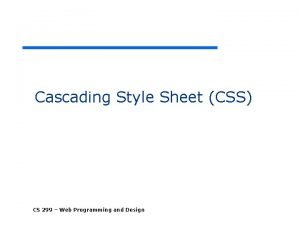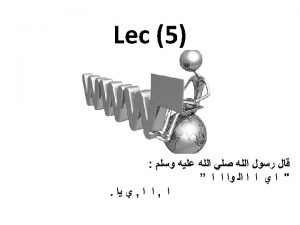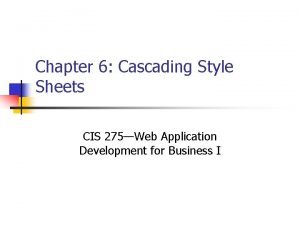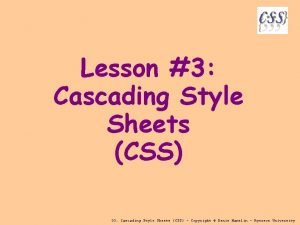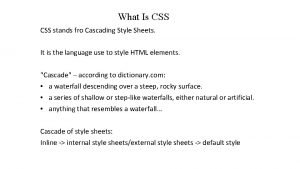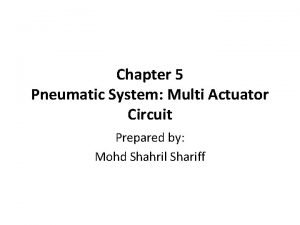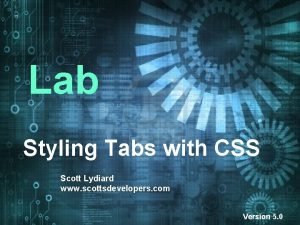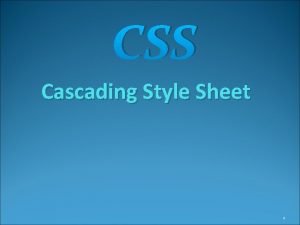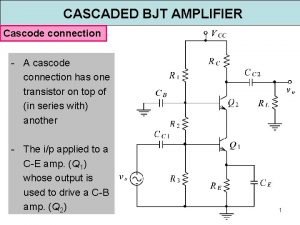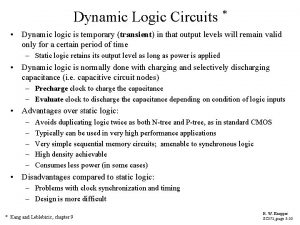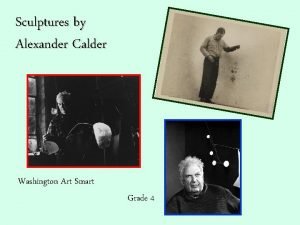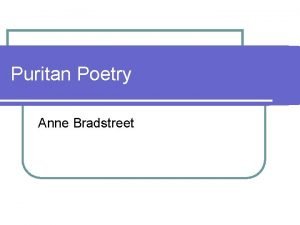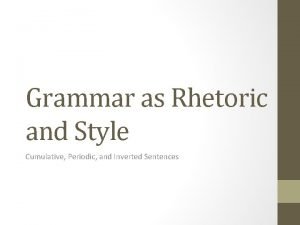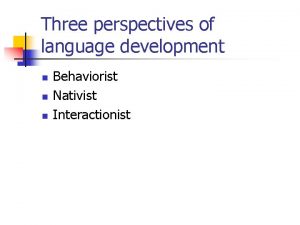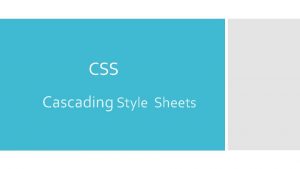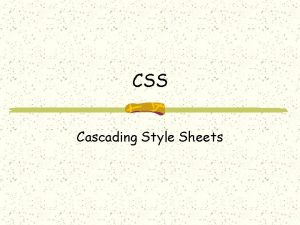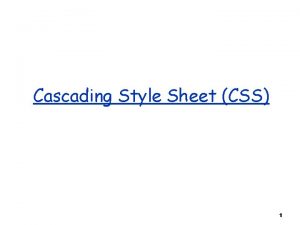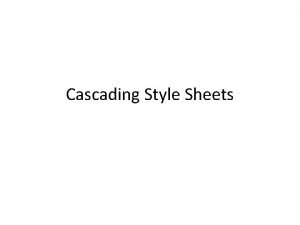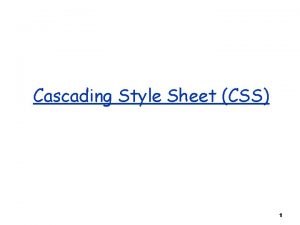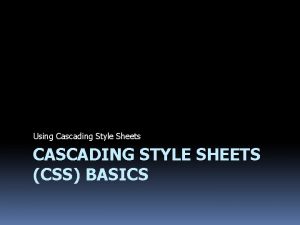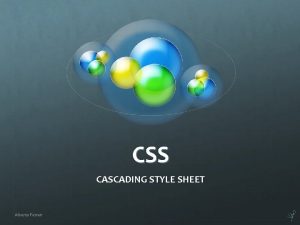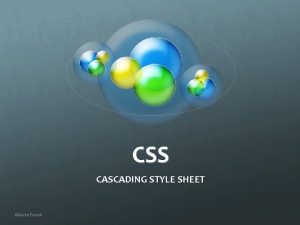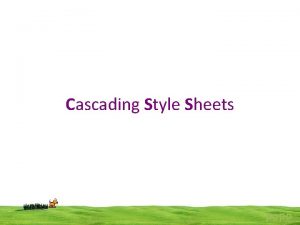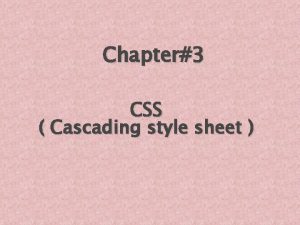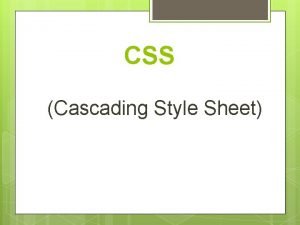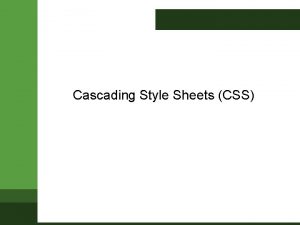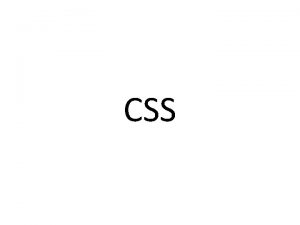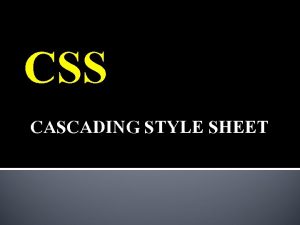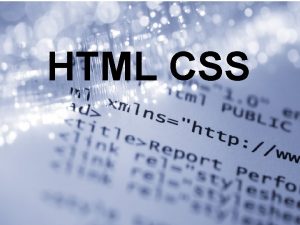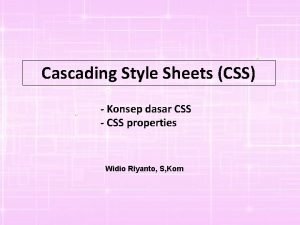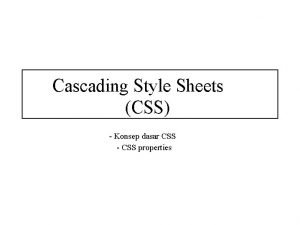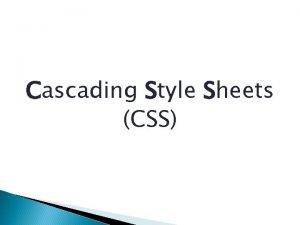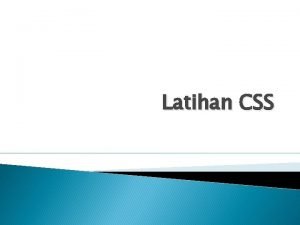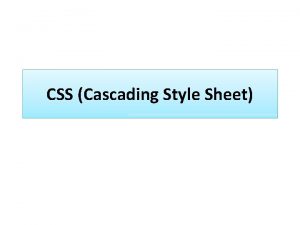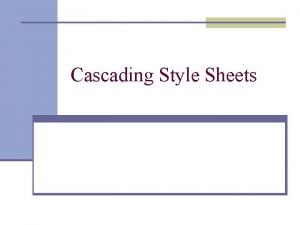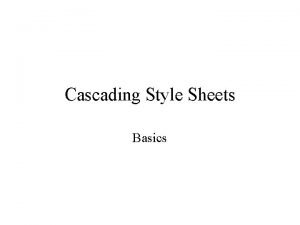UNITII CSS CSS CSS stands for Cascading Style








































- Slides: 40

UNIT-II CSS

CSS • CSS stands for Cascading Style Sheets • CSS describes – how HTML elements are to be displayed on screen, paper, or in other media. – saves a lot of work. It can control the layout of multiple web pages all at once. – External style sheets are stored in CSS files

CSS Syntax • A CSS rule-set consists of a selector and a declaration block: Syntax: Selector { Declaration 1; Declaration 2; . . . } Example: h 1 {color: blue; font-size: 12 px; } • Selector – points to the HTML element you want to style. • Declaration block – contains one or more declarations separated by semicolons. – Each declaration includes a CSS property name and a value, separated by a colon. – A CSS declaration always ends with a semicolon, and declaration blocks are surrounded by curly braces.

CSS Selectors • CSS selectors – used to "find" (or select) HTML elements based on element name, id, class, attribute, and more. • Element Selector – selects elements based on the element name. – Example • You can select all <p> elements on a page. • The id Selector – uses the id attribute of an HTML element to select a specific element.

CSS Selectors • The id of an element should be unique within a page – The id selector is used to select one unique element! – To select an element with a specific id, write a hash (#) character, followed by the id of the element. – Example

CSS Selectors • The class Selector – selects elements with a specific class attribute. – To select elements with a specific class, write a period (. ) character, followed by the name of the class. – Example

CSS Selectors • You can also specify that only specific HTML elements should be affected by a class. • Example: <!DOCTYPE html> <head> <style> p. center {text-align: center; color: red; } </style> </head> <body> <h 1 class="center">This heading will not be affected</h 1> <p class="center">This paragraph will be red and center-aligned. </p> </body> </html>

CSS Selectors HTML elements can also refer to more than one class. • Example er b m <!DOCTYPE html> nu a h <html> <head> <style> p. center {wit art t s text-align: center; color: red; } ot n n p. large { font-size: e 300%; } ca </style> </head> am n <body> lass c A <h 1 e: class="center">This heading will not be t o N affected</h 1> <p class="center">This paragraph will be red and center-aligned. </p> <p class="center large">This paragraph will be red, center-aligned, and in a large fontsize. </p> </body> </html> •

CSS Selectors • Grouping Selectors – If you have elements with the same style definitions, like this: – h 1 { text-align: center; color: red; } h 2 { } p { text-align: center; color: red; } – better to group the selectors, to minimize the code. – To group selectors, separate each selector with a comma. Example

Group Selector - Example <!DOCTYPE html> <head> <style> h 1, h 2, p { text-align: center; color: red; } </style> </head> <body> <h 1>Hello World!</h 1> <h 2>Smaller heading!</h 2> <p>This is a paragraph. </p> </body> </html> Back

CSS Comments • Comments are used to explain the code, and may help when you edit the source code at a later date. • Comments are ignored by browsers. • A CSS comment starts with /* and ends with */. • Example:

CSS Comments - Example <!DOCTYPE html> <head> <style> p { color: red; /* This is a single-line comment */ text-align: center; } /* This is a multi-line comment */ </style> </head> <body> <p>Hello World!</p> <p>This paragraph is styled with CSS. </p> <p>CSS comments are not shown in the output. </p> </body> </html> Back

CSS TYPES • Cascading Order 1. Inline style (inside an HTML element) 2. External and internal style sheets (in the head section) 3. Browser default • inline style – highest priority • it will override a style defined inside the <head> tag, or in an external style sheet, or a browser default value.

Inserting CSS in HTML • Three ways : – External style sheet – Inline style • External Style Sheet: – you can change the look of an entire website by changing just one file! – Each page must include a reference to the external style sheet file inside the <link> element. – The <link> element goes inside the <head> section. – Example:

Inserting CSS in HTML • Internal Style Sheet – used if one single page has a unique style. – defined within the <style> element, inside the <head> section of an HTML page – Example

Inserting CSS in HTML • Inline Styles – to apply a unique style for a single element. – add the style attribute to the relevant element. • can contain any CSS property. – Example:

Multiple Style Sheets (Topic Beyond Syllabus) • If some properties have been defined for the same selector (element) in different style sheets, the value from the last read style sheet will be used. • Example – Assume that an external style sheet has the following style for the <h 1> element: – h 1 { color: navy; } • assume that an internal style sheet also has the following style for the <h 1> element: – h 1 { color: orange; } – Source code:

CSS BACKGROUND PROPERTIES • Background properties: – background-color • background-color: blue; – background-image • background-image: url("paper. gif"); – background-repeat • background-repeat: repeat-x | repeat-y | no-repeat; – background-attachment • background-attachment: scroll | fixed | local (scrolls along with elements content)|initial (default value) |inherit (inherits this property from parent element); – background-position • Background-position: right top | left top | center top | right center | left center | right bottom | left bottom | center bottom ; • Short hand background – background: blue url("img_tree. png") no-repeat fixed top right;

CSS FONT PROPERTIES • Two types of font family names: – generic family - a group of font families with a similar look – font family - a specific font family

CSS FONT PROPERTIES • font-family: – A text is set with the font-family property. – Should hold several font names as a "fallback" system. – browser does not support the first font • tries the next font, and so on. • font-style • mostly used to specify italic text. • Has three property values : normal | italic | oblique (similar to italic) • font-size – Sets the size of the text. – Set the size with units px (pixel) | pt (points) | em(resize the text) | % (percent)

CSS FONT PROPERTIES • font-weight – specifies the weight of a font: • normal | lighter | bold | number(e. g. 200) • font-variant – specifies whether or not a text should be displayed in a small-caps font. • small-caps | normal • Font – font shorthand property sets all the font properties in one declaration. – font: font-style font-variant font-weight font-size/lineheight font-family | caption | icon | menu | message-box | small-caption | status-bar | initial | inherit;

CSS TEXT PROPERTIES • color: – Used to set the color of the text. • background-color: – Used to set the background color of the text. • text-align: – Used to set the horizontal alignment of a text. (values are center | left | right | justify) • text-decoration: – Used to set or remove decorations from text. (values are overline | linethrough | underline | none) • text-transform: – Used to specify uppercase and lowercase letters in a text. (values are lowercase | uppercase | capitalize) • text-shadow: – adds shadow to text. (values are x, y, color example: 3 px, 2 px, red)

CSS TEXT PROPERTIES • text-indent: – Used to specify the indentation of the first line of a text. (like tab space) • letter-spacing – Used to specify the space between the characters in a text. (values +ve / -ve example +3 px / -3 px) • line-height: – Used to specify the space between lines. (values +ve / -ve example +3 px / -3 px) • direction: – Used to change the text direction of an element. (value is rtl) • word-spacing: – Used to specify the space between the words in a text. (values +ve / ve example +3 px / -3 px)

CSS Properties Topics Beyond Syllabus • Borders: – border-style: dotted | dashed | solid | double | groove | ridge | inset | outset | none | hidden; – border-width: value(px | pt | cm | em); – border-color: value; – border-top-style: dotted | dashed | solid | double | groove | ridge | inset | outset | none | hidden; – border-bottom-style: dotted | dashed | solid | double | groove | ridge | inset | outset | none | hidden; – border-left-style: dotted | dashed | solid | double | groove | ridge | inset | outset | none | hidden; – border-right-style: dotted | dashed | solid | double | groove | ridge | inset | outset | none | hidden; – border-radius: value (px) • Border short hand property: – border: 5 px solid red; – border-left: 6 px solid red; | border-right: 6 px solid red; | border-top: 6 px solid red; | borderbottom: 6 px solid red;

CSS Properties Topics Beyond Syllabus • Margin: – margin-top: auto | length (pt, px, cm)| % | inherit; – margin-right: auto | length (pt, px, cm)| % | inherit; – margin-bottom: auto | length (pt, px, cm)| % | inherit; – margin-left: auto | length (pt, px, cm)| % | inherit; • Short hand margin properties: – margin: 100 px 150 px 100 px 80 px; (top right bottom left)

CSS Properties Topics Beyond Syllabus • Link properties • • – a: link - a normal, unvisited link a: visited - a link the user has visited a: hover - a link when the user move mouse over it a: active - a link the moment it is clicked a: link / a: visited / a: hover / a: active • Properties are – color, font-family, background etc… – – – text-decoration: none | underline | overline; background-color: value; padding: ypx xpx; text-align: center | left | right; display: inline-block | inline | block | inline-table | list-item (used in <li>) | run-in | none | table (used in <table>) | table-caption (used in <table>)| tablecolumn-group (used in <table>) | etc …

CSS Properties Topics Beyond Syllabus • Table Properties: Property Description • border Sets all border properties in one declaration Values border-width | border-style | border-color| initial | inherit values for Property name (value under border): border-width: medium|thin|thick|length|initial|inherit; border- style: none | hidden | dotted | dashed | solid | double | groove | ridge | inset | outset | initial | inherit; • border-color: color | transparent | initial | inherit; • Example: border: medium dotted transparent • border-top: border-width border-style border-color | initial | inherit; • border-bottom: border-width border-style border-color | initial | inherit; • border-left: border-width border-style border-color | initial | inherit; • border-right: border-width border-style border-color | initial | inherit; • border-collapse: separate | collapse | initial| inherit;

Creating Boxes • All HTML elements can be considered as boxes. • In CSS, the term "box model" is used when talking about design and layout. • The CSS box model is essentially a box that wraps around every HTML element. It consists of: margins, borders, padding, and the actual content. • The image below illustrates the box model:

Creating Boxes • Explanation of the different parts: • Content - The content of the box, where text and images appear • Padding - Clears an area around the content. The padding is transparent • Border - A border that goes around the padding and content • Margin - Clears an area outside the border. The margin is transparent • The box model allows us to add a border around elements, and to define space between elements.

Creating Boxes Example: <!DOCTYPE html> <head> <style> div { width: 300 px; border: 25 px solid green; padding: 25 px; margin: 25 px; } </style> </head> <body> <h 2>Demonstrating the Box Model</h 2> <div>This text is the actual content of the box. We have added a 25 px padding, 25 px margin and a 25 px green border. </div> </body> </html>

Creating Boxes • • • In order to set the width and height of an element correctly in all browsers, you need to know how the box model works. Note: When you set the width and height properties of an element with CSS, you just set the width and height of the content area. To calculate the full size of an element, you must also add padding, borders and margins. Assume we want to style a <div> element to have a total width of 350 px. Here is the math to obtain the total width of 350 px: 320 px (width) + 20 px (left + right padding) + 10 px (left + right border) + 0 px (left + right margin) = 350 px The total width of an element should be calculated like this: Total element width = width + left padding + right padding + left border + right border + left margin + right margin The total height of an element should be calculated like this: Total element height = height + top padding + bottom padding + top border + bottom border + top margin + bottom margin Note: Internet Explorer 8 and earlier versions, include padding and border in the width property. To fix this problem, add a <!DOCTYPE html> to the HTML page.

Displaying • The display property is the most important CSS property for controlling layout. The display Property: • The display property specifies if/how an element is displayed. • Every HTML element has a default display value depending on what type of element it is. The default display value for most elements is block or inline. Block-level Elements: • A block-level element always starts on a new line and takes up the full width available (stretches out to the left and right as far as it can).

Displaying • • Examples of block-level elements: <div> <h 1> - <h 6> <p> <form> <header> <footer> <section>

Displaying • • • Inline Elements An inline element does not start on a new line and only takes up as much width as necessary. This is an inline <span> element inside a paragraph. Examples of inline elements: <span> <a> <img>

Displaying • Display: none; • display: none; is commonly used with Java. Script to hide and show elements without deleting and recreating them. Take a look at our last example on this page if you want to know how this can be achieved. • The <script> element uses display: none; as default. • Override The Default Display Value • As mentioned, every element has a default display value. However, you can override this. • Changing an inline element to a block element, or vice versa, can be useful for making the page look a specific way, and still follow the web standards. • A common example is making inline <li> elements for horizontal menus: Example

Displaying • Note: Setting the display property of an element only changes how the element is displayed, NOT what kind of element it is. – So, an inline element with display: block; is not allowed to have other block elements inside it. • Hiding an element can be done by setting the display property to none. The element will be hidden, and the page will be displayed as if the element is not there: visibility : hidden; also hides an element. • However, the element will still take up the same space as before. The element will be hidden, but still affect the layout:

<!DOCTYPE html> <head> <style> h 1. hidden { display: none; } </style> </head> <body> <h 1>This is a visible heading</h 1> <h 1 class="hidden">This is a hidden heading</h 1> <p>Notice that the h 1 element with display: none; does not take up any space. </p> </body> </html>

<!DOCTYPE html> <head> <style> h 1. hidden { visibility: hidden; } </style> </head> <body> <h 1>This is a visible heading</h 1> <h 1 class="hidden">This is a hidden heading</h 1> <p>Notice that the hidden heading still takes up space. </p> </body> </html>


 Cascading style sheets outlook
Cascading style sheets outlook Cascading style sheets definition
Cascading style sheets definition Objectives of css
Objectives of css Css stands for
Css stands for In css nc ii, avr stands for
In css nc ii, avr stands for Css stands for
Css stands for Css stands for
Css stands for Css stands for ______ *
Css stands for ______ * Css stands for
Css stands for What is css stands for
What is css stands for Beda pohon kinerja dan cascading
Beda pohon kinerja dan cascading Pneumatic circuit examples
Pneumatic circuit examples With css
With css Mnemonic code
Mnemonic code Beda cascading dan pohon kinerja
Beda cascading dan pohon kinerja Vertical-align trong css
Vertical-align trong css Cascading consequences
Cascading consequences Customer intimacy strategy map
Customer intimacy strategy map Cascading rpjmd
Cascading rpjmd Cascade bjt
Cascade bjt Fractional cascading
Fractional cascading What is cascading effect?
What is cascading effect? Cascading behavior in networks
Cascading behavior in networks Interconnecting or cascading two plc counters involves
Interconnecting or cascading two plc counters involves Dynamic shift register
Dynamic shift register Cascading flowers calder
Cascading flowers calder Cascading op amps
Cascading op amps A css comprises of style rules that are interpreted
A css comprises of style rules that are interpreted Css button generator
Css button generator Plain style poetry
Plain style poetry Punctuation style of business letter
Punctuation style of business letter How to write
How to write Periodic style vs running style
Periodic style vs running style Formal vs casual tone
Formal vs casual tone Nnn speech
Nnn speech Kolposkopi px
Kolposkopi px Kyssande vind
Kyssande vind Strategi för svensk viltförvaltning
Strategi för svensk viltförvaltning Anatomi organ reproduksi
Anatomi organ reproduksi Stig kerman
Stig kerman Informationskartläggning
Informationskartläggning

